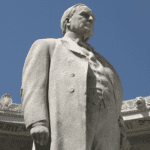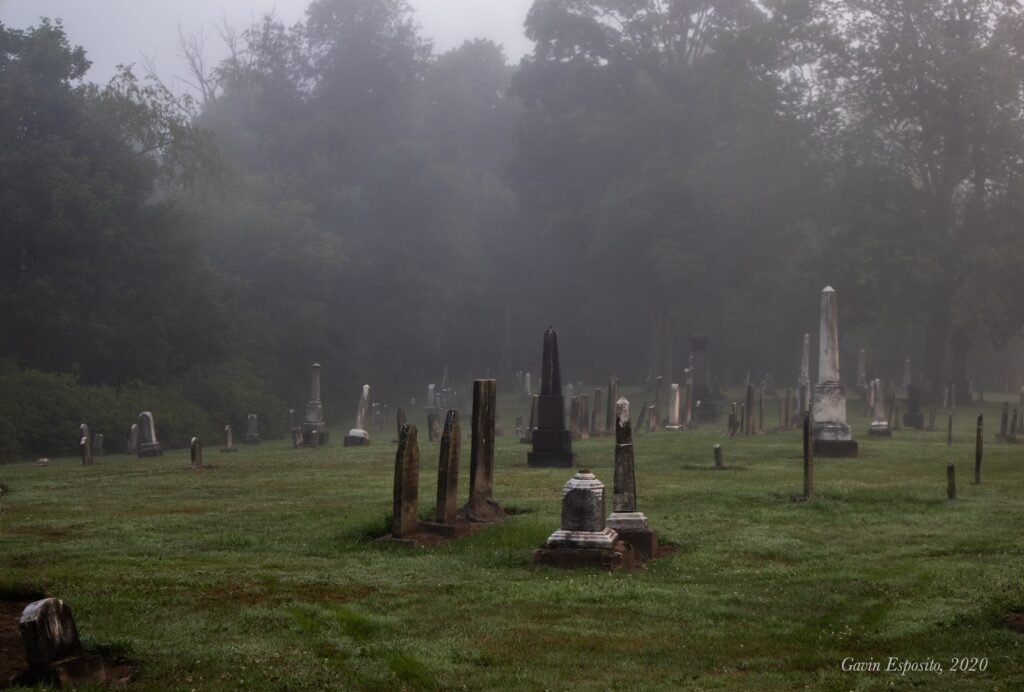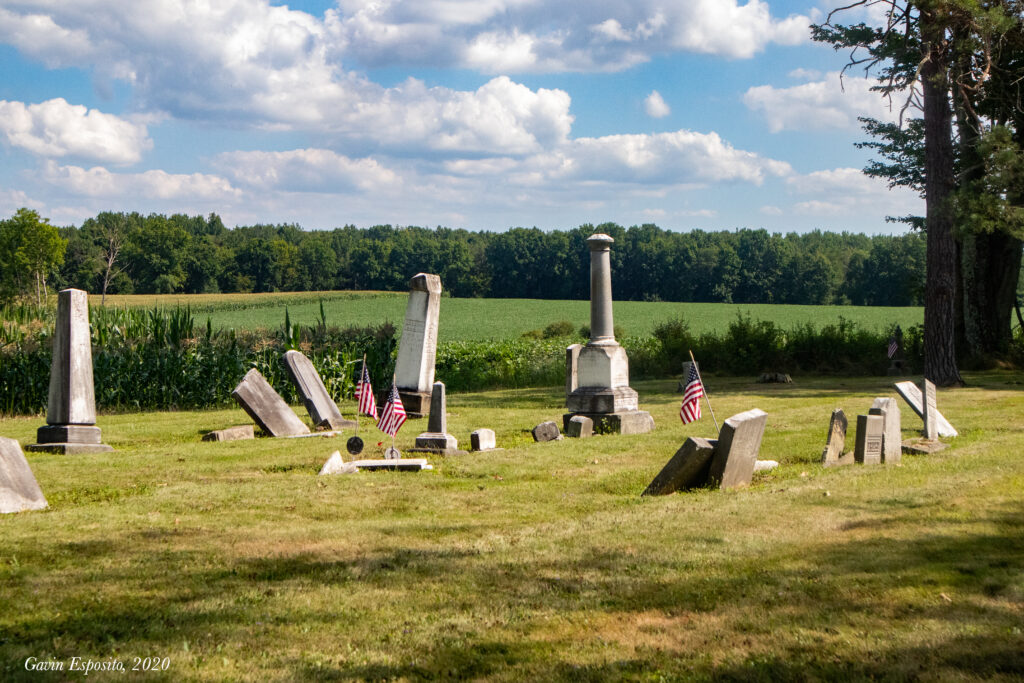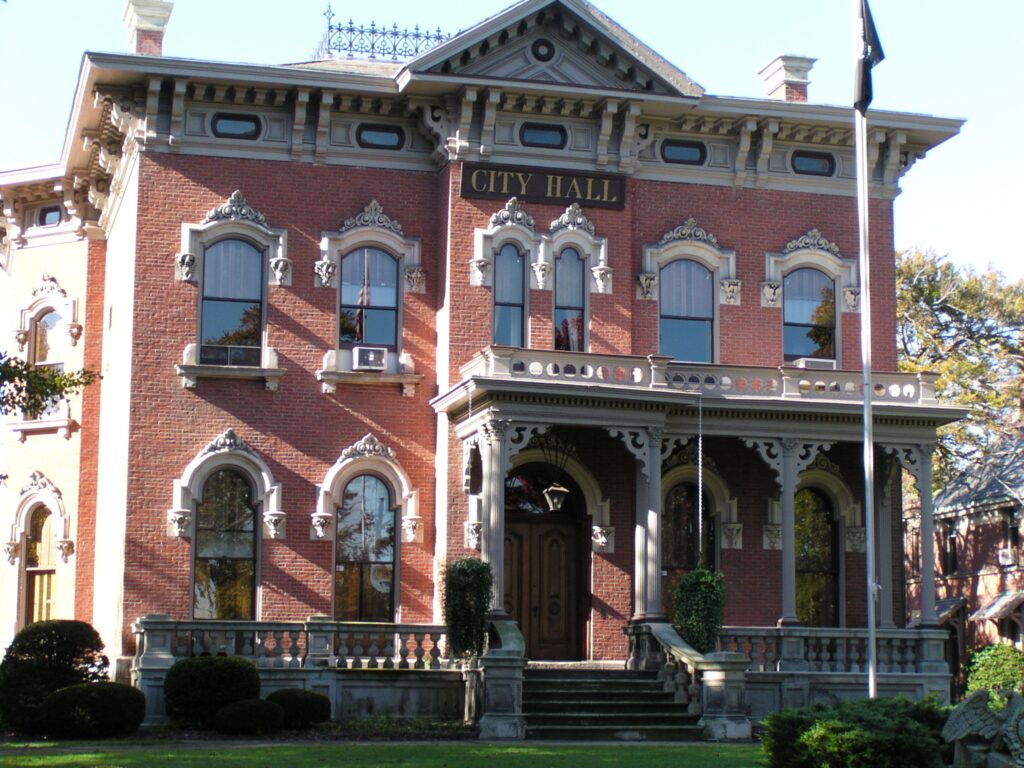Tucked away along State Route 7, just half a mile from the “center” of town, Vernon Center Cemetery (Or as it’s colloquially called, Pioneer Cemetery) sits within a grove of tall trees, accessed by a gravel driveway.
Bound by a once-tamed field to the south and an algae-filled pond to the north, this yard sits about as unspoiled as it was when established in 1798. That year, this little lot was selected as the final resting place for Jeremiah Emmons, formerly the first practicing physician of Hartland, Hartford County, Connecticut who came to Vernon Township with his son-in-law, Aaron Brockway, Vernon’s first permanent settler. It was while bathing in Pymatuning Creek in July 1798 that Mr. Emmons met his untimely fate, drowned by the creek’s flowing waters.
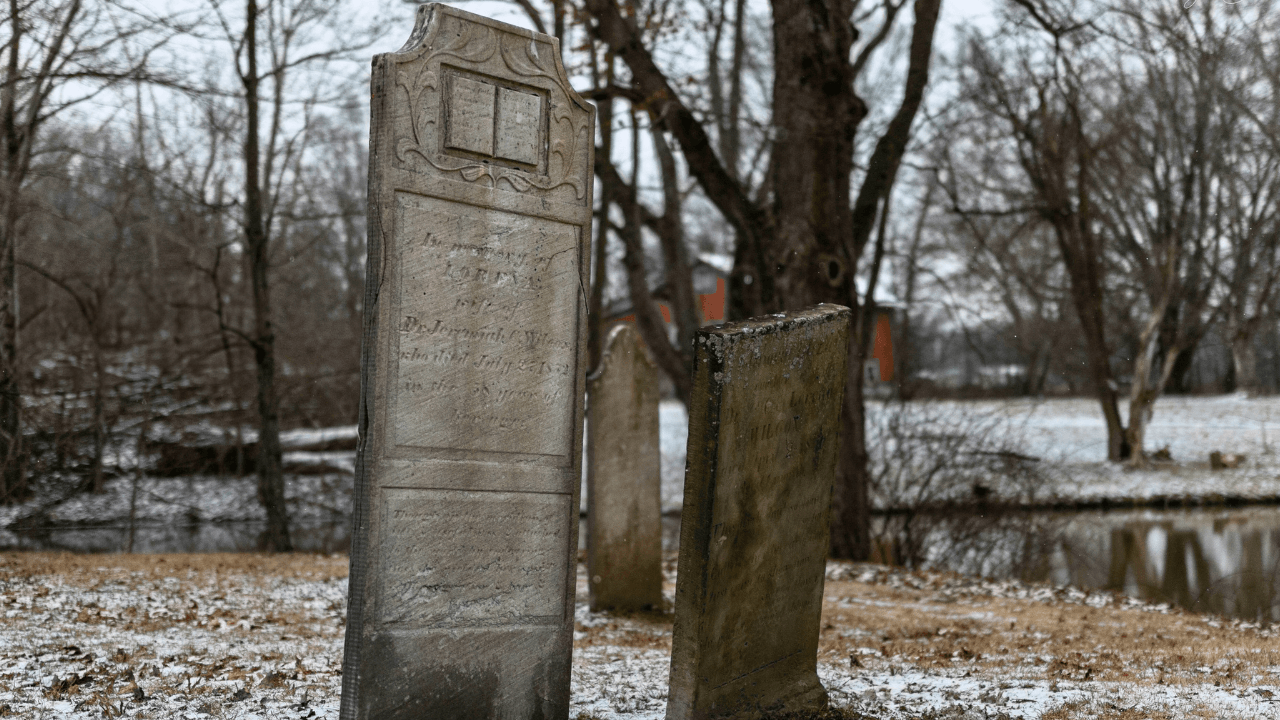
Surrounded by scenery almost as true to as when it was established in 1798, the Vernon Pioneer Cemetery is the oldest in Trumbull County, preceding Warren’s Old Mahoning by six years.
The night following Jeremiah’s death, during the midst of a “great thunderstorm,” Mary Brockway, Jeremiah’s sister gave birth to a “babe which uttered no cry,” the first child born in the township. Although no stones remain for either interment, these two burials officially make the Vernon Pioneer Cemetery the oldest cemetery in Trumbull County.
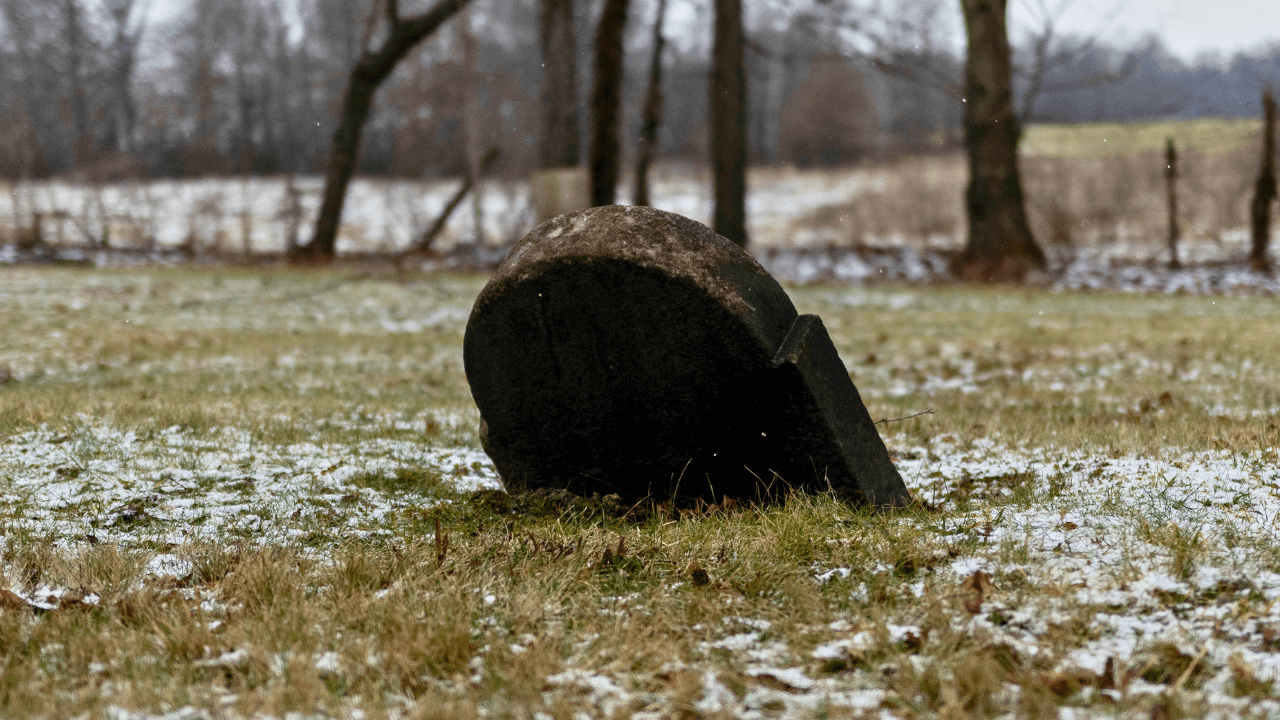
A testament to its age, many stones are simply unlettered slabs, created long before suitable carving talent was in the area. Could this perhaps be the stone of the yard’s first interment, Jeremiah Emmons, who drowned while bathing in Pymatuning Creek?
Predating Warren’s Old Mahoning by six years (although it should be noted Old Mahoning is the oldest public burying ground in Trumbull County). In 1848, the yard was deeded from Aaron Brockway to Vernon township’s trustees, where it remains under the jurisdiction of today.
Flavel Sutliff : Terminated by Insanity
In the annals of Trumbull County’s history, perhaps no name is as synonymous with the cause of abolition as the Sutliff family. It was Levi and Milton Sutliff, two brothers from Vernon who fought tooth and nail against the dreadful institution known as slavery. A lawyer by profession, Levi established the Trumbull County Anti-Slavery Society in 1832, and Milton lectured, serving first as a Free Soiler state senator, and then as a Republican Ohio Supreme Court Justice–positions that allowed him to carry his beliefs to the upper echelons of politics. However, there is the story of another brother named Flavel, who met an untimely end.
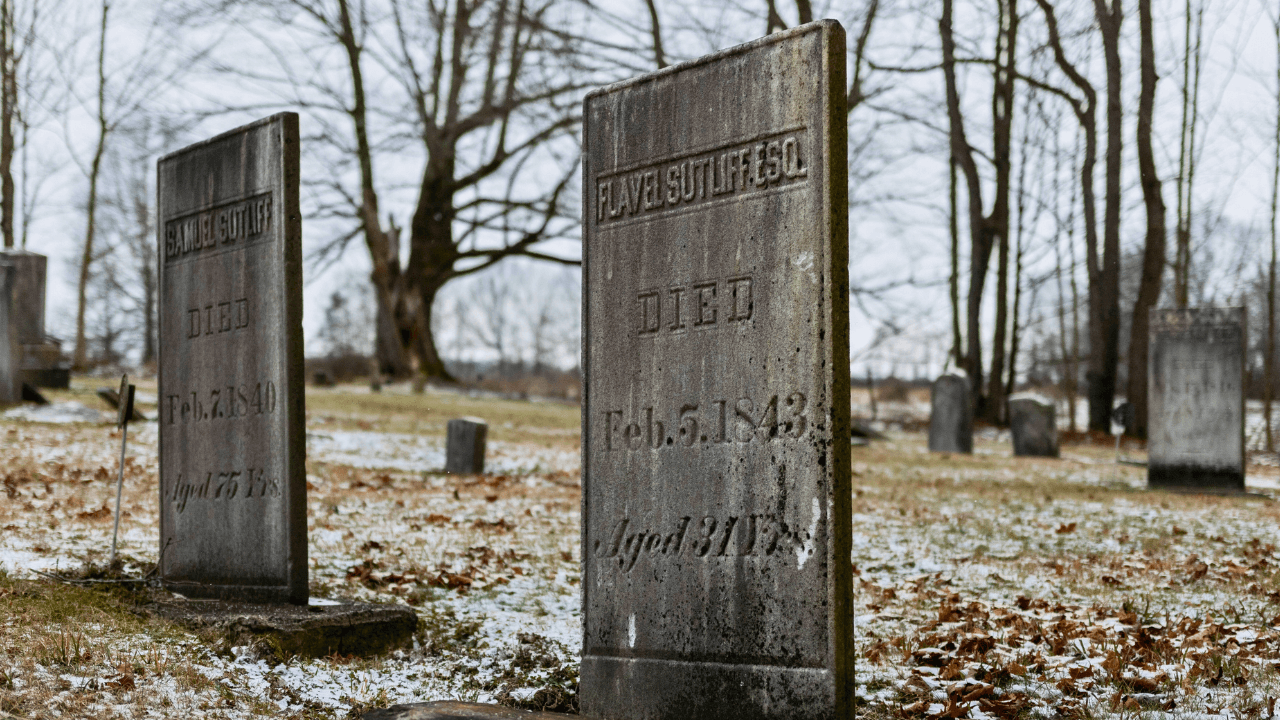
The finely lettered marble slab of Flavel Sutliff gives no indication of how this “clever young man” was suddenly “terminated by insanity”.
The youngest son of Samuel and Ruth (Granger) Sutliff, natives of Durham, Middlesex County, Connecticut who removed from Tioga County, New York to Vernon in 1804, Flavel Sutliff was born on June 24th, 1811. Little is known about his early life, however like his brothers, he too was an ardent abolitionist, serving as the secretary of the Trumbull County Anti-Slavery Society. A lawyer also, he practiced law with Joshua Reed Giddings, a fellow abolitionist and future state representative in Jefferson, Ashtabula County. Elected as Jefferson’s Justice of Peace in 1838, he sought to advance his career and become the prosecuting attorney of Ashtabula County. However, due to his anti-slavery views, he ultimately lost. Residing in Jefferson with his mother, who had relocated there following her husband’s death in 1840, Flavel lived an apparently solitary existence; having never married. Passing away on February 5th, 1843, George Jullian, Joshua Reed Giddings’ biographer wrote of the 32-year-old lawyer “Flavel was a clever young man whose promising career was suddenly terminated by…insanity.”
Elihu and Mercy Beach: Whose Soul Has Fled Through Realms Of Space
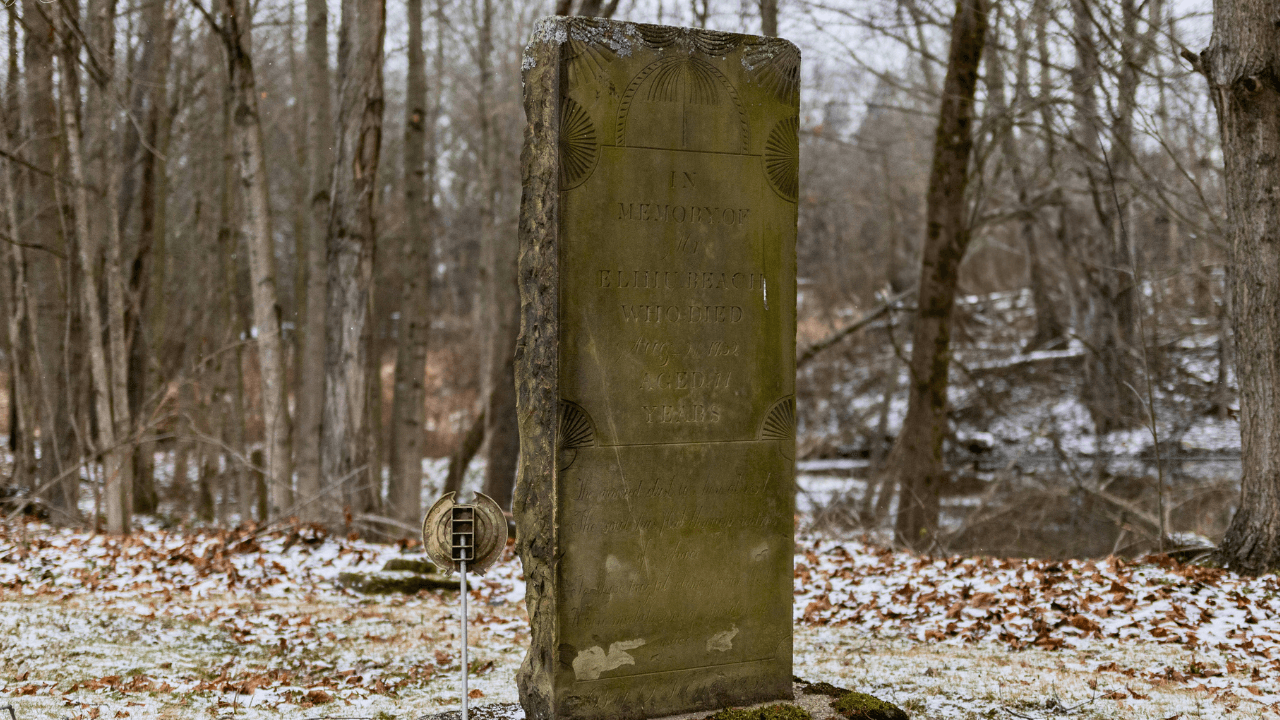
Elihu and Mercy’s gravestone carved by Vernon-based gravestone carver Obed King.
Elihu’s service under Col. Brady in the First Connecticut Regiment for a term of nine months. Removing to Hartland, Hartford County in 1798, they resided here for thirteen years until 1811, when they departed Connecticut following Mercy’s mother’s death. Summarizing that it was Mercy, not Elihu who “felt the call of the west,” Brownlee states that the aging couple, then in their fifty-third and fifty-first year respectively, “probably stopped for two or three years” near Dryden, Tompkins County, New York where a few of their sons and daughters had settled before.
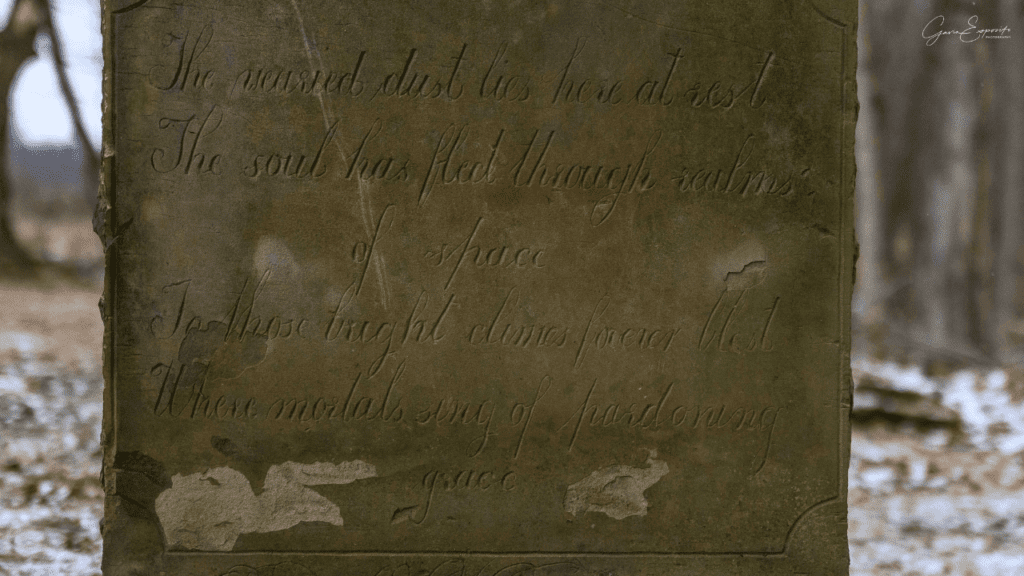
Carved by Vernon-based gravestone carver Obed King, Elihu and Mercy’s gravestone is his only signed work, featuring the following verse: “The wearied dust lies here at rest/The soul has fled through realms/of space/ To those bright climes forever blest /Where mortals sing of pardoning/grace/ By O. King 1834”
Proceeding onto Vernon by 1815, the couple purchased “forty acres at the southeast corner of the Center of Vernon” from Jeremiah and Amelia Wilcox, the site of the old high school––now an empty field. On August 9th, 1832, Elihu passed away at the age of 74 years old and was buried at the Center Cemetery in Vernon. Left “in the care of” her son, Elihu, and then her grandson, Moses, “little need of” supervision was needed for Mercy, as she proved to be a formidable force in her old age. According to her letters, in September 1835, when seventy-four years old, she traveled to New York State for two months to visit her children and brother, averaging “twelve to fifteen miles a day.” By 1848, she had become old and feeble, as evidenced by her “shaky handwriting” and mentions of deliberating illness. Nonetheless, she persisted and lived for three more years, passing away on July 6th, 1851, aged 91 years. Buried beside her husband at the Vernon Pioneer Cemetery, her name is omitted from her husband Elihu’s gravestone, carved by Obed King of Vernon Township. Featuring an umbrella-shaped willow, fans in the corner, and delicate, flowing script, it is his only signed work throughout the five townships he worked in, inscribed at the base “O. King, 1834.”
Charles Hotchkiss: A-Mouldering In An Unmarked Grave
A native of New Haven, Connecticut, Charles Hotchkiss was born on February 26th, 1796, the fourth of ten children of Caleb and Hannah (Woodling) Hotchkiss. Enlisting as a sergeant with Capt. S.D. Tilden’s Company, 37th U.S. Infantry during the waning days of the War of 1812, Charles was only engaged with the service for a little under a year before being discharged in May 1815. Following the cessation of hostilities, he and six of his siblings migrated to the Western Reserve, where they settled in the northeastern tier of Trumbull County. Marrying Phebe Maria Beach, a daughter of Elihu and Mercy Beach mentioned above on June 18th, 1818, the couple’s first daughter, Hannah was born in 1819, followed by Mary, 1825, Wealthy, 1829; and lastly, Eunicia, 1837. Passing away on February 13th, 1846, Charles never got to see the contribution his family made to American history, as while attending the prestigious Grand River Academy in Austinburg, Ashtabula County, Wealthy became enamored with John Brown Jr., the eldest son of abolitionist John Brown. Married in Vernon on July 13th, 1847, Wealthy and John resided in the township for a few short years before moving to Miami, Kansas where following his father’s killing of five pro-slavery settlers on the night of May 24th, 1856 in the Pottawatomie Massacre.
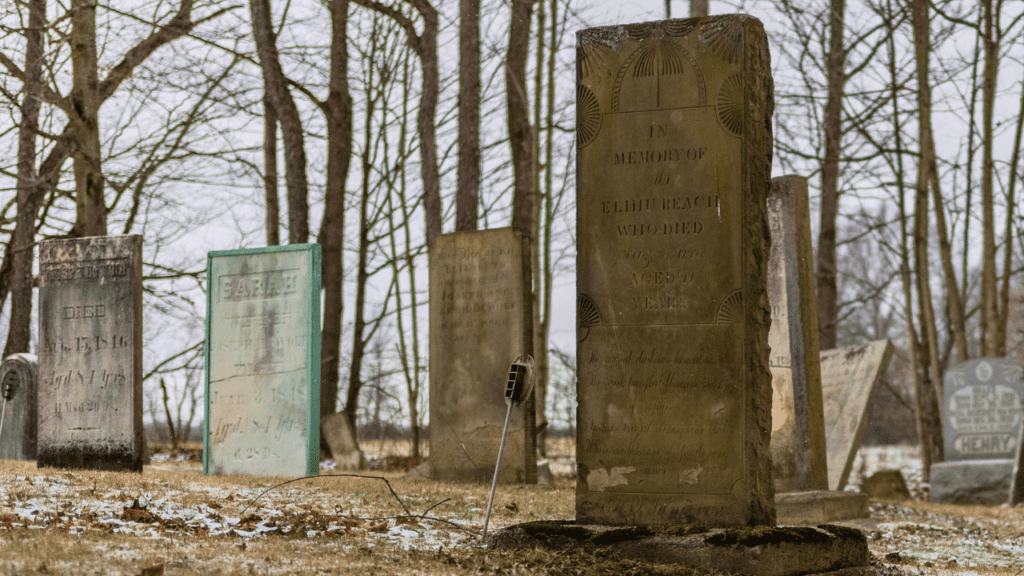
Unlike the majority of graves at the Vernon Pioneer Cemetery, that of Charles Hotchkiss is unmarked, his connection to famous abolitionist John Brown all but forgotten.
Following this, John and Wealthy moved back to Ohio, renting a property in Dorset, Ashtabula County. However in the winter of 1859, Brown made a deal with Wealthy’s sister, Eunica, and her husband Ethelbert Alexander Fobes to store “fence castings” in the upper haymow of their barn at the corner of McClelland Road and Hayes Roads in Wayne Township (now demolished). These were not “fence castings,” but weaponry destined for John Brown’s hideout in Maryland where he would coordinate his infamous raid from. Ultimately, as history tells us, the Raid at Harper’s Ferry was unsuccessful, as 16 people died, including John Brown, who was hanged for treason. Back in Ashtabula County, his son, and daughter-in-law were presumably wanted, so in 1862, they sold their farm in Dorset and relocated to South Bass Island. Living out the rest of their days here, the couple lived in relative leisure, farming, growing grapes, and lecturing upon the evils of slavery and alcohol. John Brown Jr. died in 1895 followed by Wealthy in 1911, and both are buried at the Crown Hill Cemetery in Put in Bay. Unfortunately, Wealthy’s father and John’s father-in-law, Charles Hotchkiss rests in an unmarked grave at the Vernon Pioneer Cemetery, or to paraphrase the song “John Brown’s Body,” “a-moldering in an (unmarked) grave.”
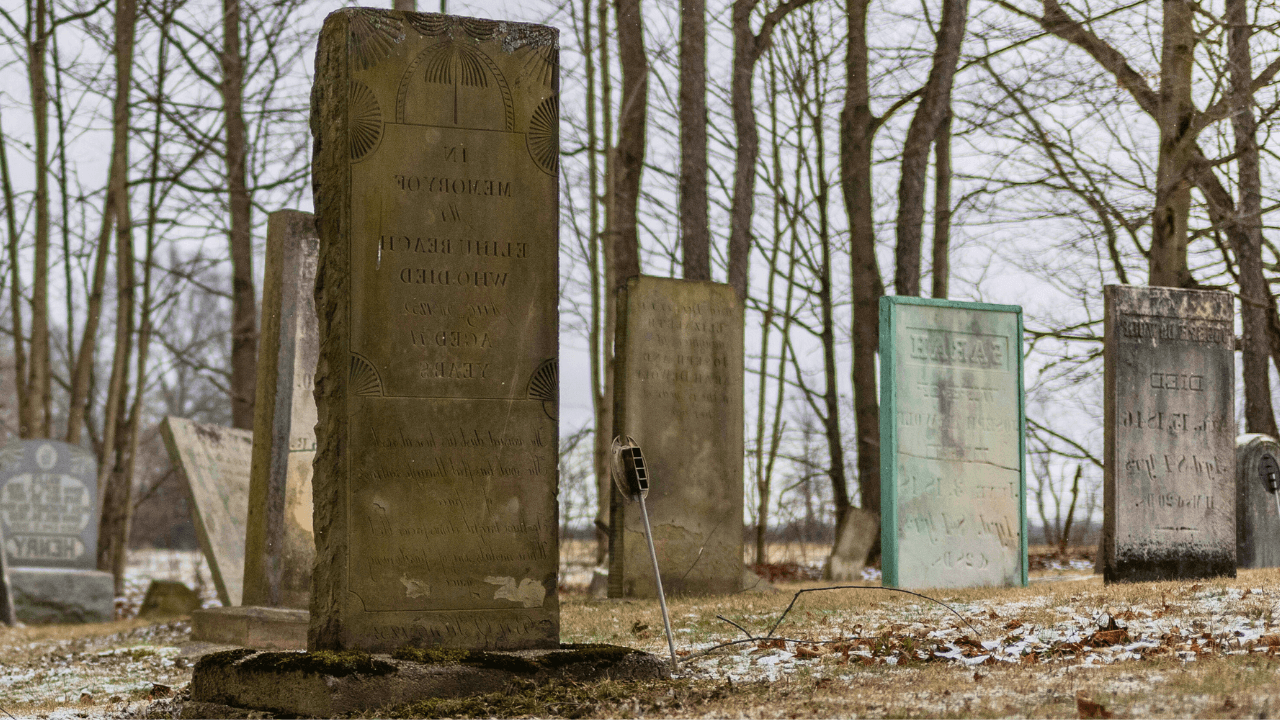 ">
">





